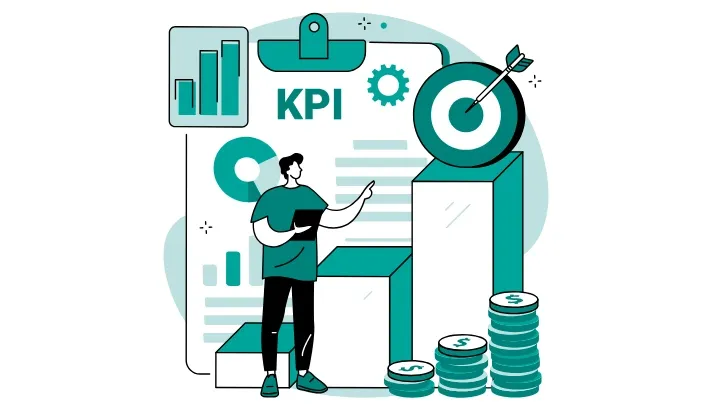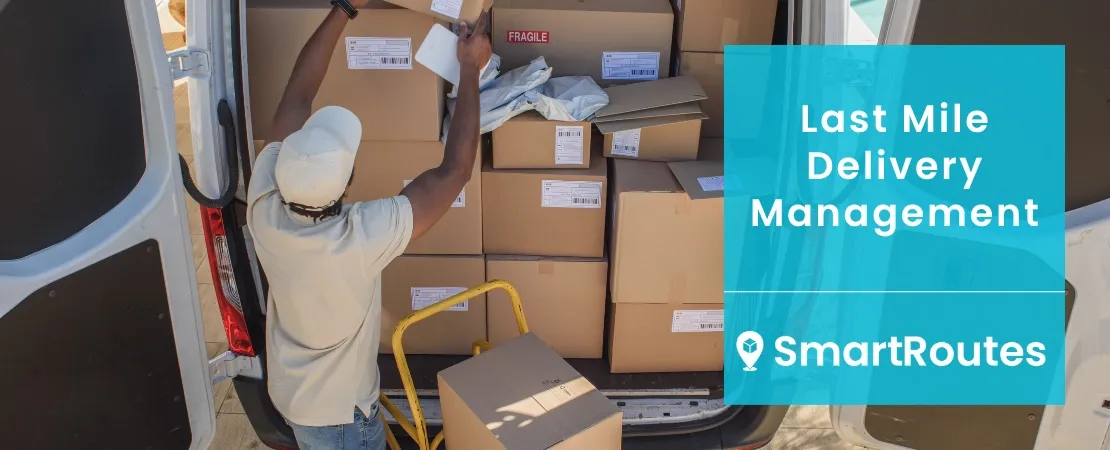We've discussed the importance of the last mile in several blogs, and for good reason. The final leg of the delivery process is often the only point where you interact directly with your customers.
A seamless last mile experience leaves a lasting impression—ideally, a positive one. To achieve this, the right last mile delivery software is essential.
In this blog, we’ll cover key strategies to optimize your last mile delivery management and overcome common challenges.
What is Last Mile Delivery Management?
Last mile delivery management focuses on the final stage of the delivery process, where goods move from a distribution center to the customer’s doorstep.
This phase is critical as it directly affects the customer experience and requires efficient planning to manage costs, routes, and delivery times effectively.
SmartRoutes Route Planning Software
Streamline your entire delivery process, all from one platform

Challenges in Last Mile Delivery Management
The last mile is often the most complex and costly part of the delivery process due to various external factors. Here are some common challenges:
- Inaccurate or Incomplete Delivery Data: Missing or incorrect address details can lead to delays or failed deliveries. This not only frustrates customers but also adds costs due to redelivery attempts.
- Unforeseen Issues: Traffic jams, road closures, or bad weather can disrupt even the most carefully planned delivery schedules. Without dynamic route adjustments, these issues can cause significant delays.
- High Costs: The last mile is expensive, often accounting for over 50% of total shipping costs. While it might seem cost-effective to cut corners, doing so can harm the delivery experience and lead to customer churn.
- Urban vs. Rural Deliveries: Urban areas benefit from dense delivery zones, making it easier to consolidate routes. In contrast, rural areas cover larger distances, requiring more time, fuel, and careful planning to maintain efficiency.
- Seasonal Demand Spikes: Peak seasons, like holidays, can overwhelm delivery operations without proper planning. Failing to scale up resources can result in missed delivery windows and dissatisfied customers.
- In-House vs. Outsourced Delivery Teams: In-house teams offer greater control over processes and customer interactions but require consistent delivery volumes to remain cost-effective. Outsourcing provides flexibility, yet businesses may face higher costs and reduced oversight.
- Lack of Visibility: Without real-time tracking, it's challenging to monitor last mile deliveries, especially when using third-party logistics providers. This can result in poor performance management and delayed responses to delivery issues.
- Failed Deliveries: Poor communication with customers regarding delivery times can lead to missed deliveries. This increases costs due to redelivery attempts and negatively affects the customer experience.
How Last Mile Delivery Software Solves these Challenges
Investing in a last mile delivery platform can significantly improve efficiency and reduce costs. Let’s take a look at how it can solve each of the mentioned challenges:
Route Optimization
One of the key ways last mile software solves common delivery challenges is through route optimization.
By calculating the most efficient routes, last mile software reduces fuel consumption and minimizes delivery time. It can also flag incomplete or inaccurate delivery data before dispatch, allowing managers to correct issues upfront, which helps prevent delays.
This proactive approach ensures smoother operations from the start, reducing errors that could lead to costly reattempts.
Real-Time Tracking & Updates
Another critical feature is real-time tracking and updates, which allows fleet managers to monitor driver progress live.

This visibility provides instant updates on delays, detours, or route changes, which helps quickly address disruptions like traffic congestion, road closures, or bad weather.
With real-time tracking, businesses can dynamically adjust routes, ensuring that deliveries stay on track and that customer expectations are met.
Cost Reduction & Improved Efficiency
By minimizing idle time, eliminating backtracking, and optimizing fuel usage, business can benefit from a lower cost per delivery, which in turn leads to long-term cost savings.
These improvements not only reduce fuel consumption but also enhance the overall productivity of the fleet, contributing to a more sustainable operation.
Scalability for Demand Spikes
During periods of high demand, such as holidays, last mile delivery software offers much-needed scalability for demand spikes.
Delivery software ensures that additional resources can be added quickly and seamlessly, helping businesses meet customer expectations without losing quality or efficiency.
Full Visibility & Control
With full visibility and control, businesses can track all deliveries, whether handled by in-house teams or third-party logistics providers.
The software gives managers real-time updates on driver performance and delivery statuses, allowing them to address issues quickly and ensure accountability.

This full visibility also allows businesses to better manage their resources and plan for future delivery routes based on performance data, leading to continuous improvements.
Fewer Failed Deliveries
Lastly, fewer failed deliveries are another benefit of last mile delivery software.
By sticking to promised time windows and enabling the prioritization of time-sensitive orders, the software helps ensure that deliveries arrive on time.
Automated notifications also keep customers informed about delivery statuses, reducing confusion and frustration.
Key Takeaways for Effective Last Mile Delivery
Managing last mile delivery is complex, but the right strategies and last mile delivery software can make all the difference. By leveraging automation, route optimization, and real-time tracking, businesses can enhance efficiency, reduce costs, and improve customer satisfaction.
Ready to take control of your last mile operations? Try SmartRoutes free for 7 days and see how easy it is to upload delivery data and dispatch drivers in minutes!
FAQ
1. What is last mile delivery in supply chain management?
Last mile delivery refers to the final step of the supply chain, where goods are transported from a distribution center or warehouse to the customer’s doorstep. It is a critical phase in the delivery process because it directly impacts customer satisfaction and plays a significant role in the overall cost of delivery.
2. How can route optimization improve last mile delivery?
Route optimization helps businesses plan the most efficient delivery routes, reducing fuel costs and delivery times. By using advanced software, companies can dynamically adjust routes in real time to avoid traffic delays or other disruptions, leading to faster, more cost-effective deliveries and improved customer experiences.
3. Why is last mile delivery so expensive?
Last mile delivery can be costly because it often involves small, individualized deliveries over short distances, which requires more time, labor, and resources. With factors like traffic, road conditions, and customer availability, businesses must optimize routes and resources to reduce these costs while maintaining service levels.
If you enjoyed this blog, you might also be interested in:




